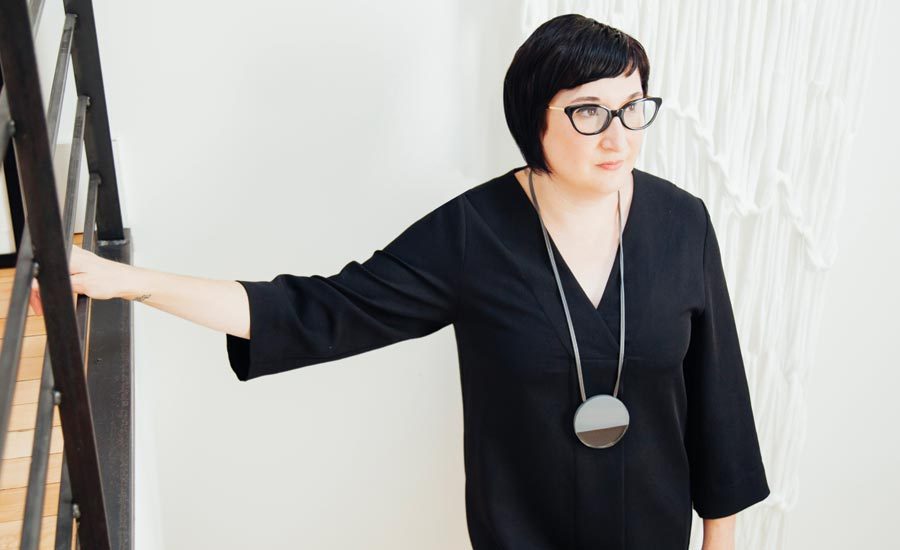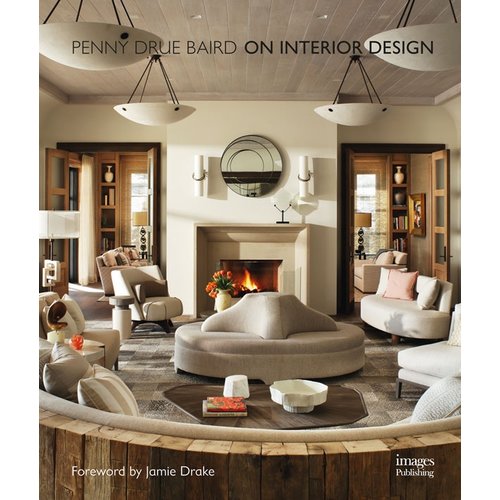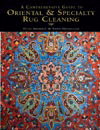Mohawk Designer Royce Epstein on Forging a Path in the Flooring Industry






Royce Epstein has traveled what she calls “a nonlinear path” to become the A&D design director for Mohawk Industries. From working as a camp counselor and in a record store as a teen to assisting architect and designer Michael Graves and climbing the ladder in large design firms for 21 years, she learned about her love of materials and how to apply them in commercial environments.
1) Tell us about your role.
We have a large R&D department. We have research and development, we have product development. Technically, I’m on the product development team, but I’m one of the few people on our product development team that is public-facing. Because of my background as a commercial interior designer and material specialist, I am like the voice of a customer. I lived our customers’ lives. When I go in to meet with them, I go in with inspiration and I talk about trends, which designers are hungry to learn about. While my work does help drive sales, I like to think of myself as a design thought leader.
2) Did you always know you’d end up in flooring?
I always knew I would do something in the arts—that’s always been my passion. I studied art history and studio art photography as a kid. The people in my family have always worked on the material side of the fashion business. My dad and my grandfather were in the leather business. My mom’s side of the family was in the yarn business. My great grandfather was a woodworker, so I always had this affinity for materials, and my mom is incredible with yarns, like knitting. It’s kind of neat how my life has played out, fulfilling my DNA.
3) How does this passion for the arts play into making carpet?
Another part of me is this deep intellectual pursuit about history. I’m always thinking about this idea of context, like what does it all mean? We don’t arbitrarily make things in the world. When we make carpet, I think about all the related topics that have to do with what we make—everything from sustainability to cultural trends, economic factors, all the things that a company does. What are we contributing to the world? How are we making a difference?
4) What helped to set you up for this career?
Everything I did prepared me. Whether I was working in interior design or when I was working in a record store in high school, everything was about context and learning.
It’s not easy to have a design career in any capacity, any way, shape or form today. The world is so nomadic and transient. I forged my own way, I guess. I had wonderful interior design mentors, wonderful architectural mentors and great product development mentors, including Jackie, my boss today. She cares about the same thing that our customers care about. We want to differentiate ourselves and be known for design and for design thinking and making innovative contributions to the industry that have not been done before.
5) What are the challenges in this career?
Half the battle of any kind of trend research is really understanding, “Where is the world headed?” Color forecast is important, and yet we’re not looking at seasonal trends. We’re looking more at these long cultural shifts that really drive human behavior.
6) What was your first professional job?
It sounds cliche, but everything in life is about the journey, not the destination. When I graduated college, I thought, “I’m going to be an art historian,” and I was going to work in a museum and be a professor. That didn’t pan out. And so, my first job was actually working at Michael Graves and in his studio. I worked at Michael’s office as an admin assistant and I got promoted into interiors after three months because the team realized I have art skills. He was all about, you know, using references to our history in his work all the time as part of the post-modern movement.
“Relationship building is so important. ... when you’re transient and you jump around from job to job, you’re not building these lifelong meaningful relationships.”
I was there for three years and I literally started at the bottom. I was literally picking up dog poop and getting pizza for Michael’s students, and chasing the FedEx truck, and you name it. I didn’t go to design school, and I consider those three years like grad school; I learned a lot there and consider it like three years of grad school.
7) What can others learn from your path?
I had a lot of obstacles; I really did. People would ask, “Why does Royce get to work on this project?” or “Why does she get to do that?” And I really created my own role. I became a materials specialist. No one gave that to me. I worked for that. I actively learned everything I could learn about materials. There is a lesson in there for young people today—a lot of young people, Gen Z and young millennials, demanding things. I’m a Gen Xer. I came from the school of you graduated school during the recession when there were no jobs. You have to work your way and make it happen yourself.
8) What advice do you give to people wanting a career in design?
Relationship building is so important. The thing that’s hard today is that when you’re transient and you jump around from job to job, you’re not building these lifelong meaningful relationships. And that’s really what helps us sustain people in the industry. I can honestly say that there are people in the industry who are my family because we’ve known each other for most of our lives together in various capacities. It’s about being present, being in the moment. I’m a recent breast cancer survivor and just thinking about my own mortality and what the future holds for me and all of that—it’s all unknown. None of us know.
9) What inspires you in your role?
I just joined the board at NJIT [New Jersey Institute of Technology], which is their college of architecture and design. I’m going to go on a trip with the industrial design and interior design students. That’s the stuff I really like to do—connect with community, connect with others, grow the interior design community and really inspire them.
10) What are you working on for NeoCon this year?
Our premier NeoCon launch is a collaboration we did with 13&9 Design Studio. We have collaborated with them before. We like to partner with them because they have a very similar approach to design as we do, which is looking at culture and finding a very human-sector approach to solving a problem. How can we make products that help humans live, perform and feel better?
To check out more articles in the Women in Flooring series, click here!
One area that we’ve been working on with them is based on this idea of fractals. Fractals are made in nature—like a seashell, cloud, leaves are all made with these fractal patterns. So, 13&9 did a lot of research and worked with the scientists from the University of Oregon. When we see a pattern in nature, we instantly recognize that they are fractals and look like something of nature, and because we are of nature, we have instant stress reduction. The product is Relaxing Floors. When you install these on the floor, your eyes will recognize the fractals and they bring your body some stress reduction.
Looking for a reprint of this article?
From high-res PDFs to custom plaques, order your copy today!









.jpg?t=1690771780)



